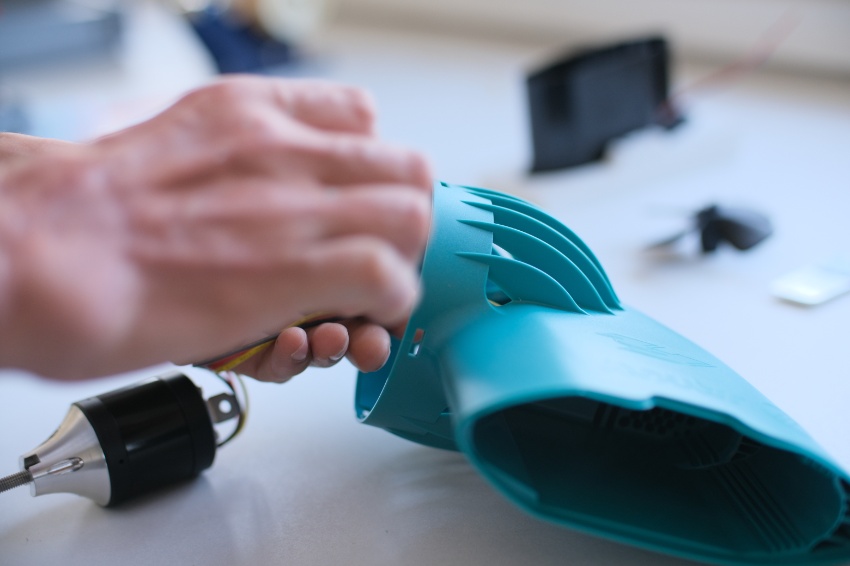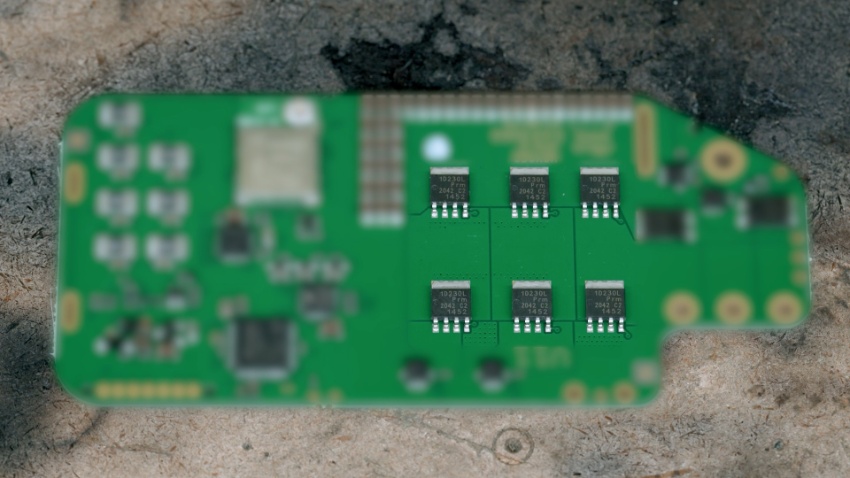Ever since the first of the new generation of small battery-cell powered motors hit the market, we have seen a wave of new products and ideas. One company that is literally riding that wave is JayKay GmbH. They have already delivered a revolutionary combination of performance, functionality and design with their e-truck that electrifies any long or skateboard. And continuing with an all-in-design approach, their most recent innovation is now making waves in the Stand Up Paddleboard (SUP) industry.
This young team from the shores of Lake Constance on the German-Swiss border have at their core a focus to challenge design limits with an ethos of innovation, passion and responsibility. They aim to create products that technologically push boundaries while at the same time minimize plastic use, reduce waste and are as carbon neutral as possible.
For their e-truck, that resulted in a design which looks like a standard skateboard truck – and can be treated and mounted quickly and easily just like a normal axle. The only difference being once you push the board the electronics kick in automatically. Instantly offering up to 1000 W and 4.6 Newton meters (Nm) of torque that can accelerate up to 40 km/h with a 12-15 km range. Yet riders know that when the battery runs dry, unlike other e-trucks they still have 100 percent freewheeling rollers.
Switch from land to water
Following the success of the e-truck, the team switched their focus to paddleboards. The rise in popularity of stand up paddleboarding has been astounding in recent years. But just as with skateboards, having that extra boost from electric motors is a nice bonus. By designing a fully encapsulated e-fin, the team is delivering supportive power for paddleboarders to go long distances, keep up with a stronger partner or safely reach the coast in offshore wind. And by using a standard mounting option, the e-fin can also be attached to surfboards, kayaks and even inflatable dinghies.
But of course, switching from a powerful unit with a built-in heat sink to a fully submerged unit brought with it several challenges. To provide the desired power and running time, the team squeezed in 12 high-performance battery cells capable of 220 Watt-hours (Wh) for a max running time of six hours. However, the biggest technical challenge for the team was not fitting all the required components into a sleek fin, but managing and dissipating heat when running the motor.


Managing heat in a confined submerged space
To use the available space within the fin to its maximum advantage that meant sitting the cells on top of the PCB. The team therefore needed powerful MOSFETs to efficiently drive the motor, without using a heatsink. Fortunately, through Benedikt Keijer (Senior Regional Sales Manager), Nexperia was able to step in and help the team. By providing samples of the 30 V, 1.2 mΩ, 250 A MOSFET in LFPAK56 (PSMN1R2-30YLD), allowed Jaykay to design the board so that everything was kept well below 100 °C, without having to sacrifice valuable space for a heatsink.
“We love working with scale-ups and start-ups like JayKay. Although these pioneering companies initially only generate limited revenues, they are the pathfinders. The “rising stars”. Innovating today where others will follow tomorrow”, commented Benedikt. “They also inform our roadmap discussions, allowing Nexperia to create ever better power MOSFETs for battery-powered motor control applications.”